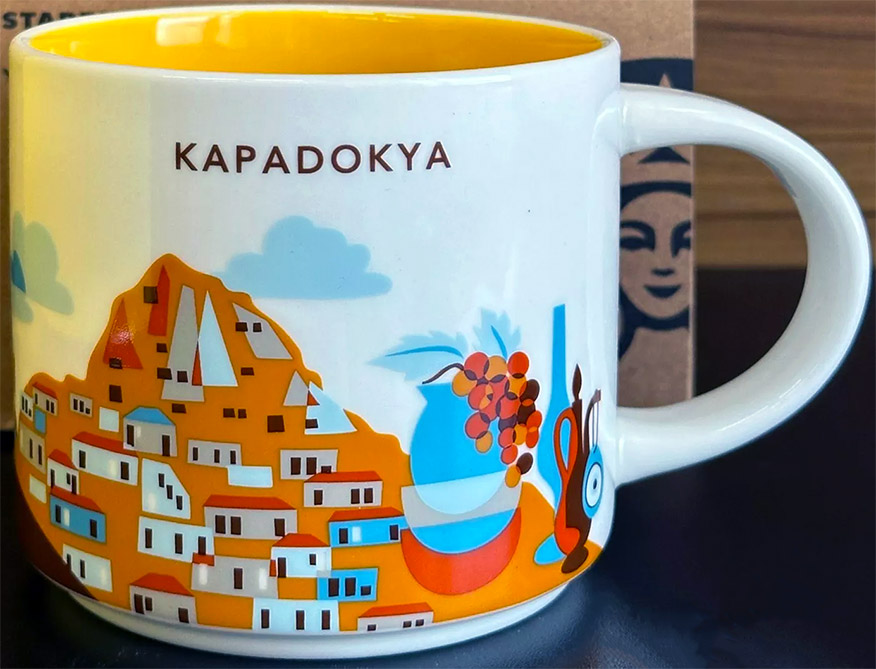
You Are Here – Kapadokya
You Are Here Kapadokya is the latest (for now) mug from Türkiye.
Kapadokya, an ancient region in central Anatolia (modern-day Turkey), has a rich history spanning thousands of years. First inhabited by the Hittites in the late Bronze Age around 1800 BCE, the region later came under Persian rule as one of their important satrapies. After Alexander the Great’s conquest, it was ruled by a line of independent kings before becoming a Roman province in 17 CE. The region gained particular significance in early Christian history during the Roman and Byzantine periods (3rd-11th centuries CE), when Christians carved thousands of cave churches and underground cities into the area’s distinctive soft volcanic rock formations, creating a vast network of refuges to escape persecution. These underground settlements, some extending eight levels deep, could shelter thousands of people and included ventilation shafts, wells, kitchens, and churches. The region’s unique landscape, formed by ancient volcanic activity and erosion, provided natural defensive advantages that various civilizations utilized throughout its history. The area later came under Seljuk and Ottoman control, though it maintained its importance as a cultural crossroads between East and West.
The front of the mug showcases the picture of Uchisar Castle, a massive outcrop of rock that has been carved into a natural fortress over centuries. The castle, riddled with tunnels, rooms, and passages, served as a crucial defensive stronghold during the Byzantine and Seljuk periods, offering commanding views of the surrounding valleys. Today, while much of its internal structure has eroded, visitors can climb to its peak for panoramic views of the moonlike landscape, including the stunning sight of Mount Erciyes in the distance.
The back of the mug presents another point of interest in Kapadokya, namely, Pasabag Valley, also known as Monks Valley. It features some of Cappadocia’s most striking fairy chimneys, distinctive mushroom-shaped rock formations created by volcanic activity and erosion. These unique geological formations once housed hermit monks, who carved cells and chapels into the rocks, with St. Simeon’s hermitage being among the most notable. The valley’s iconic three-headed fairy chimneys, formed from harder rock caps protecting softer stone below, represent some of the best-preserved examples of these distinctive formations in the region.
You should also visit the Göreme Open-Air Museum, a UNESCO World Heritage site, that represents one of the world’s most important examples of Byzantine art and monastic life from the 9th to 11th centuries. The complex contains over 30 rock-carved churches and chapels, many featuring stunning frescoes that showcase the evolution of Byzantine religious art, with the Dark Church (Karanlik Kilise) housing some of the best-preserved paintings. The site served as a major religious center and pilgrimage destination during the Byzantine period, offering modern visitors a remarkable glimpse into the spiritual and artistic achievements of medieval Christianity in Anatolia.
One of the best options to admire the wonders of the region is trying hot air balloon flights, that have become synonymous with Kapadokya, offering visitors a breathtaking aerial perspective of the region’s otherworldly landscape at sunrise. The unique combination of perfect weather conditions, stunning volcanic terrain, and hundreds of colorful balloons rising simultaneously has made this one of the world’s most photographed ballooning experiences. Each morning, weather permitting, dozens of balloons float above the valleys, providing passengers with unparalleled views of the rose-tinted rock formations, ancient cave dwellings, and fairy chimneys.












































































